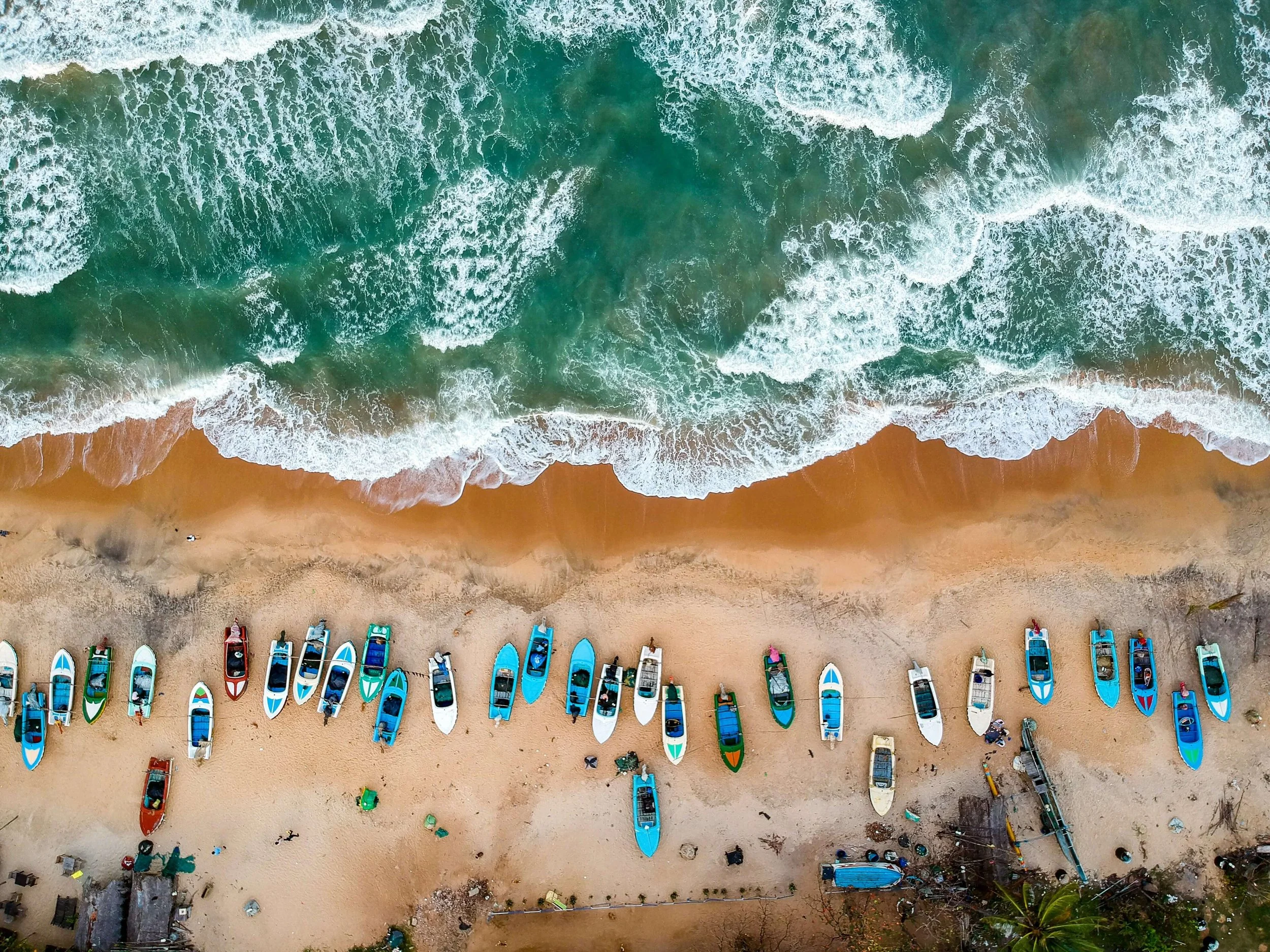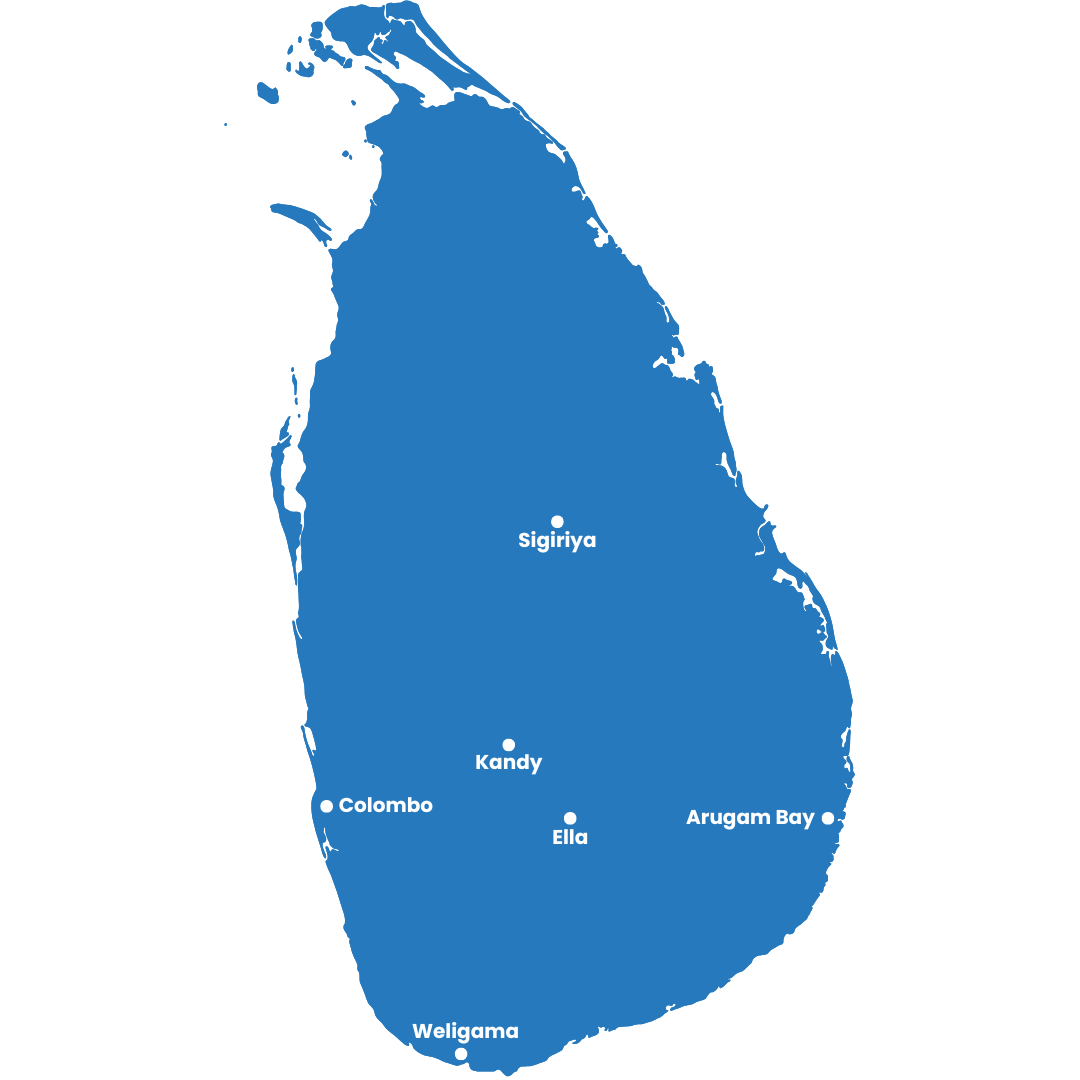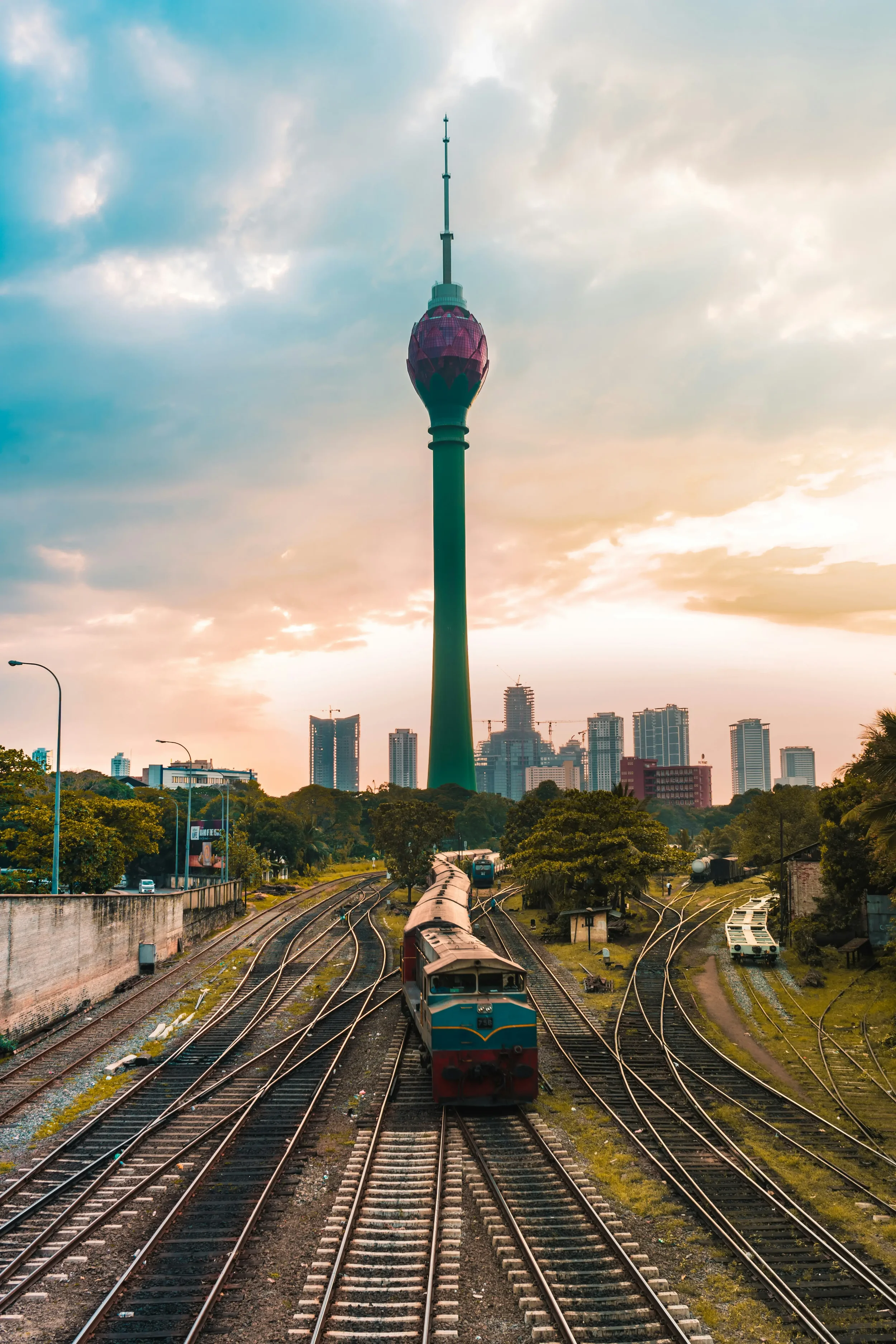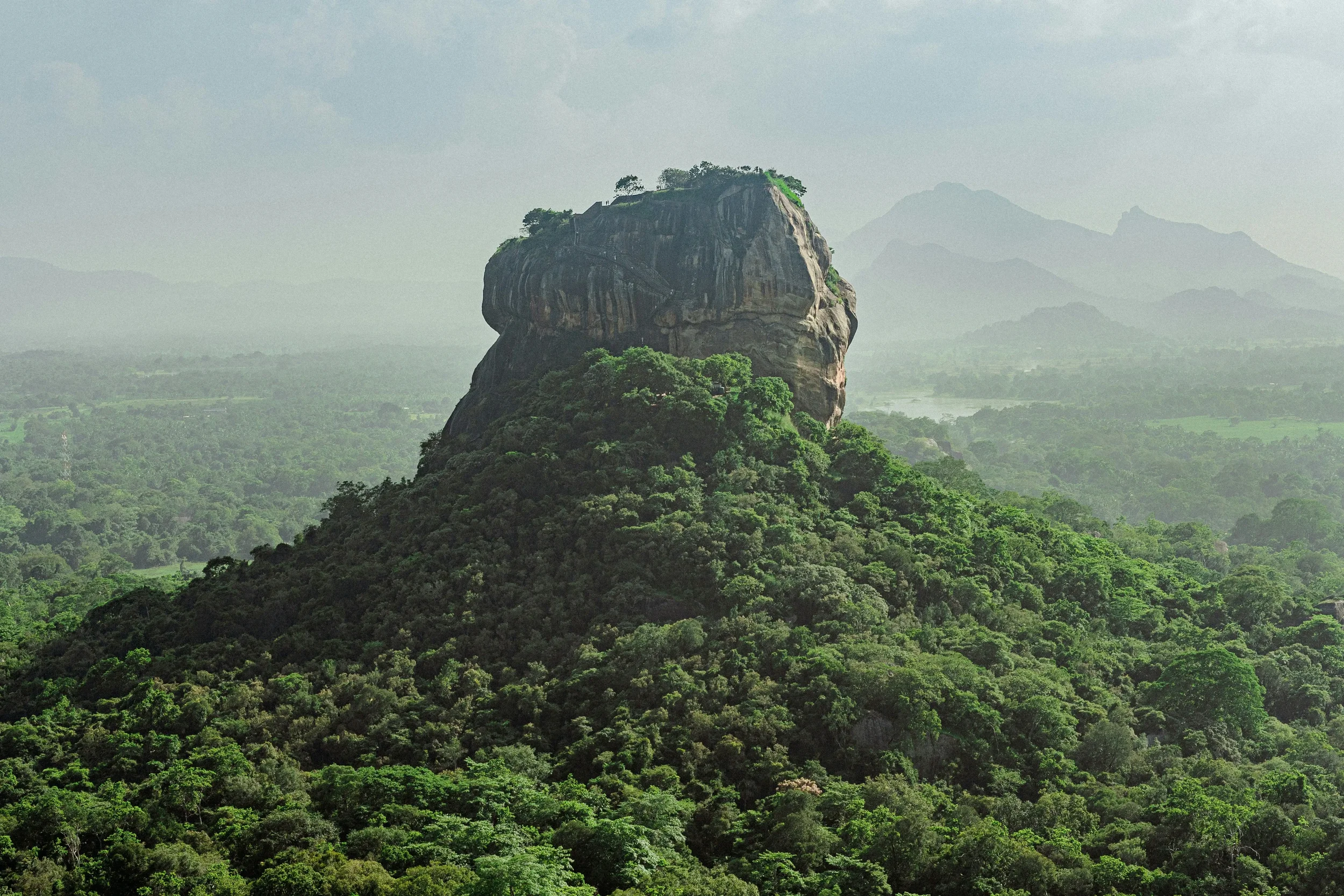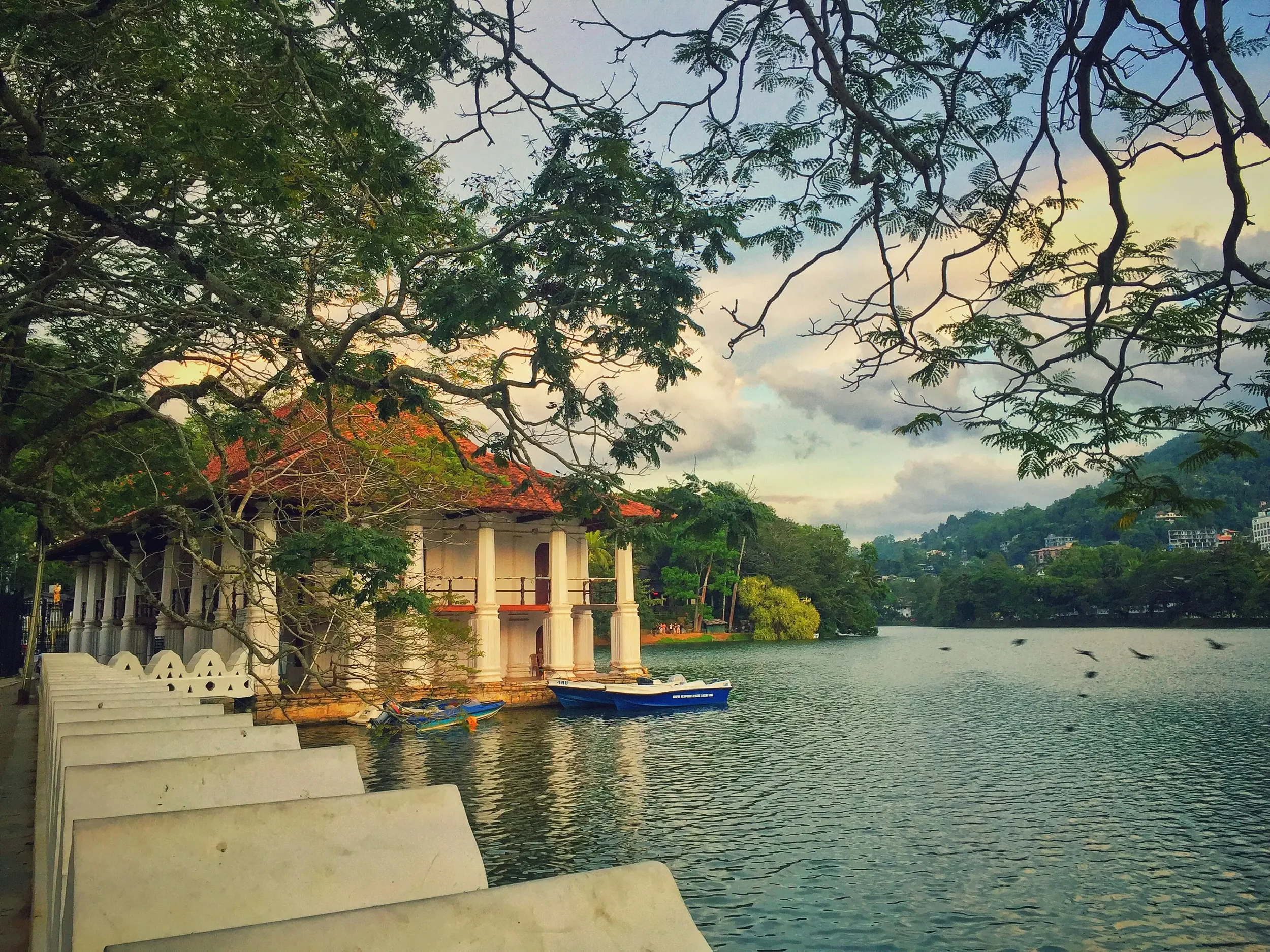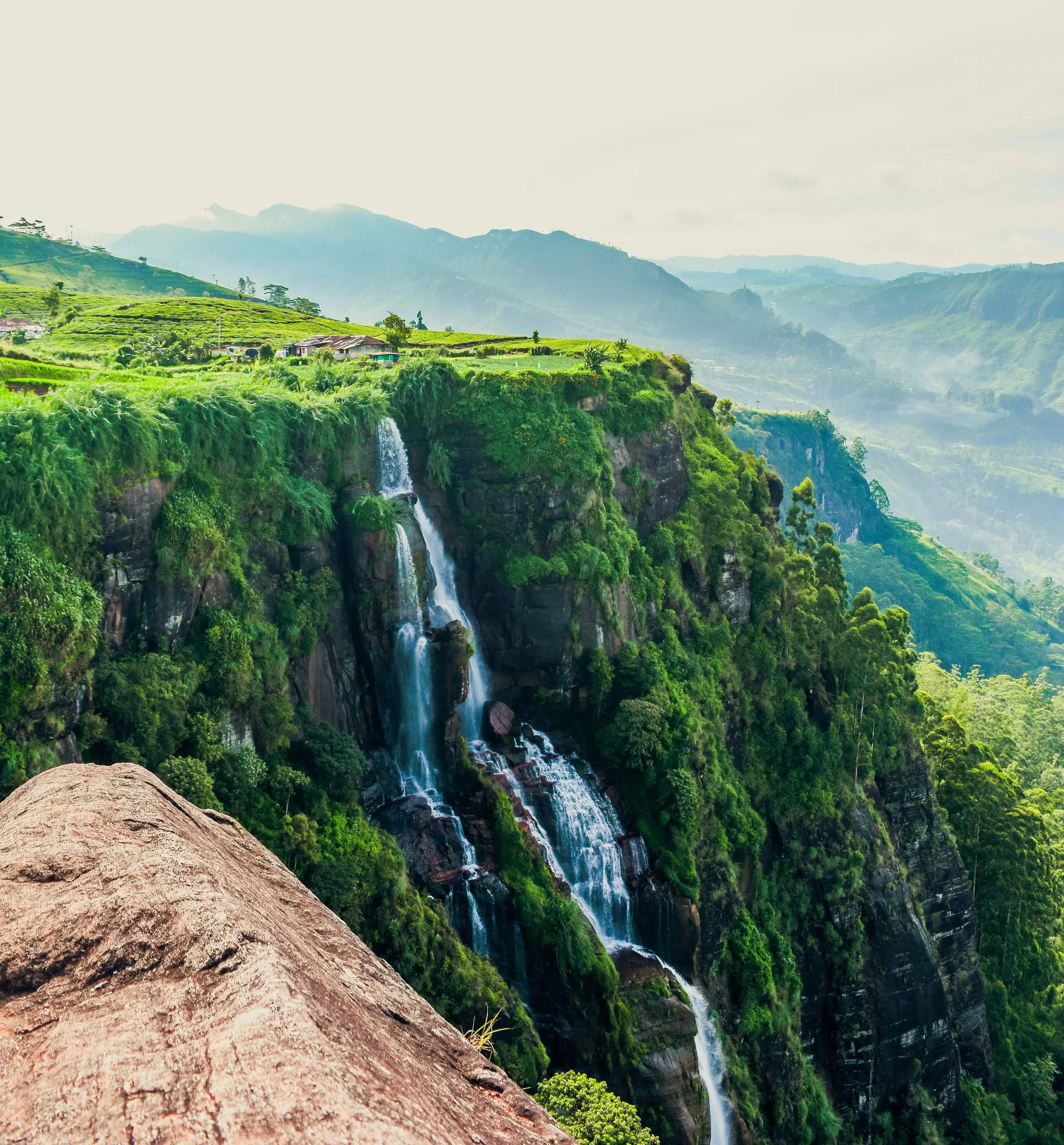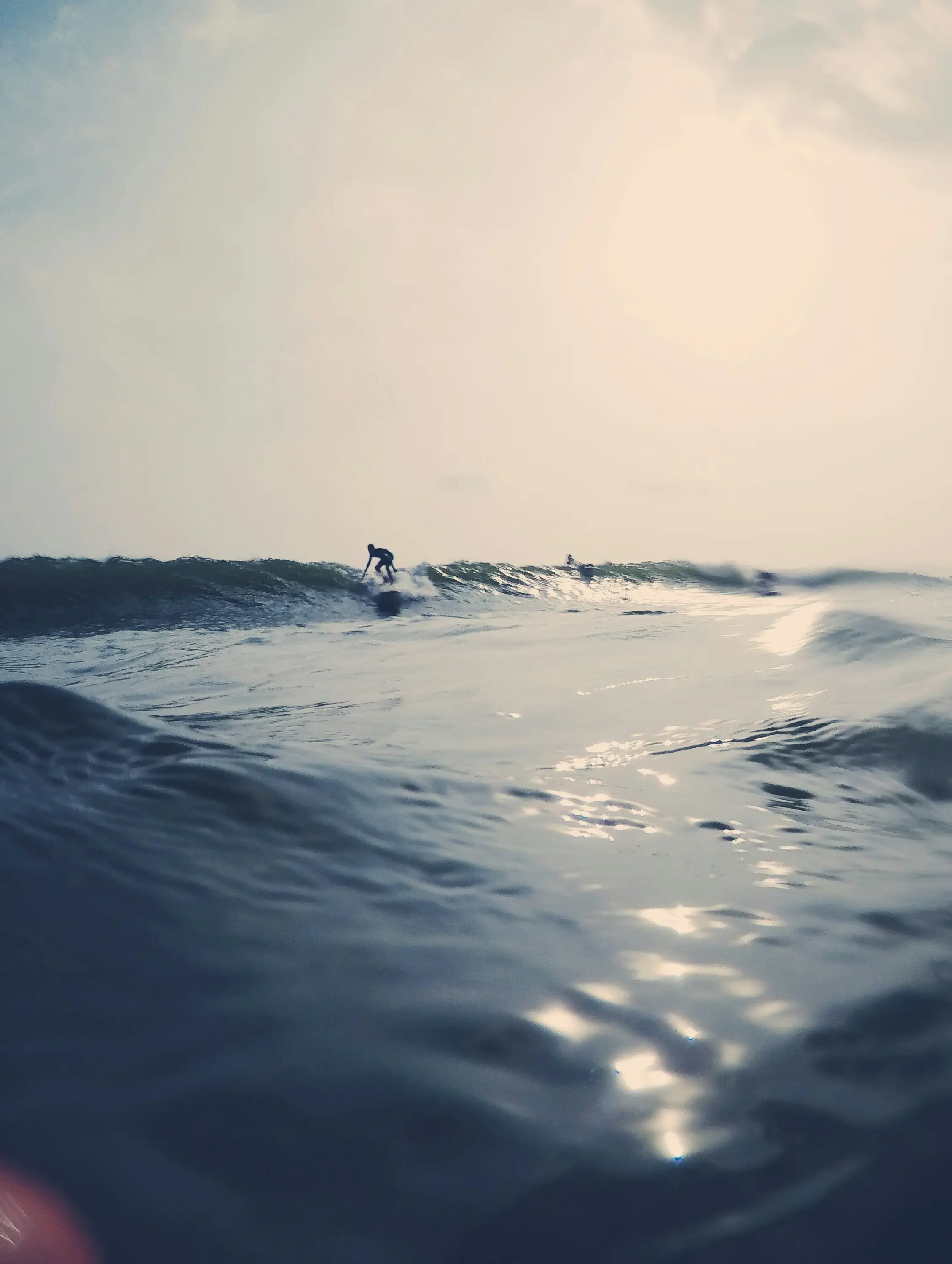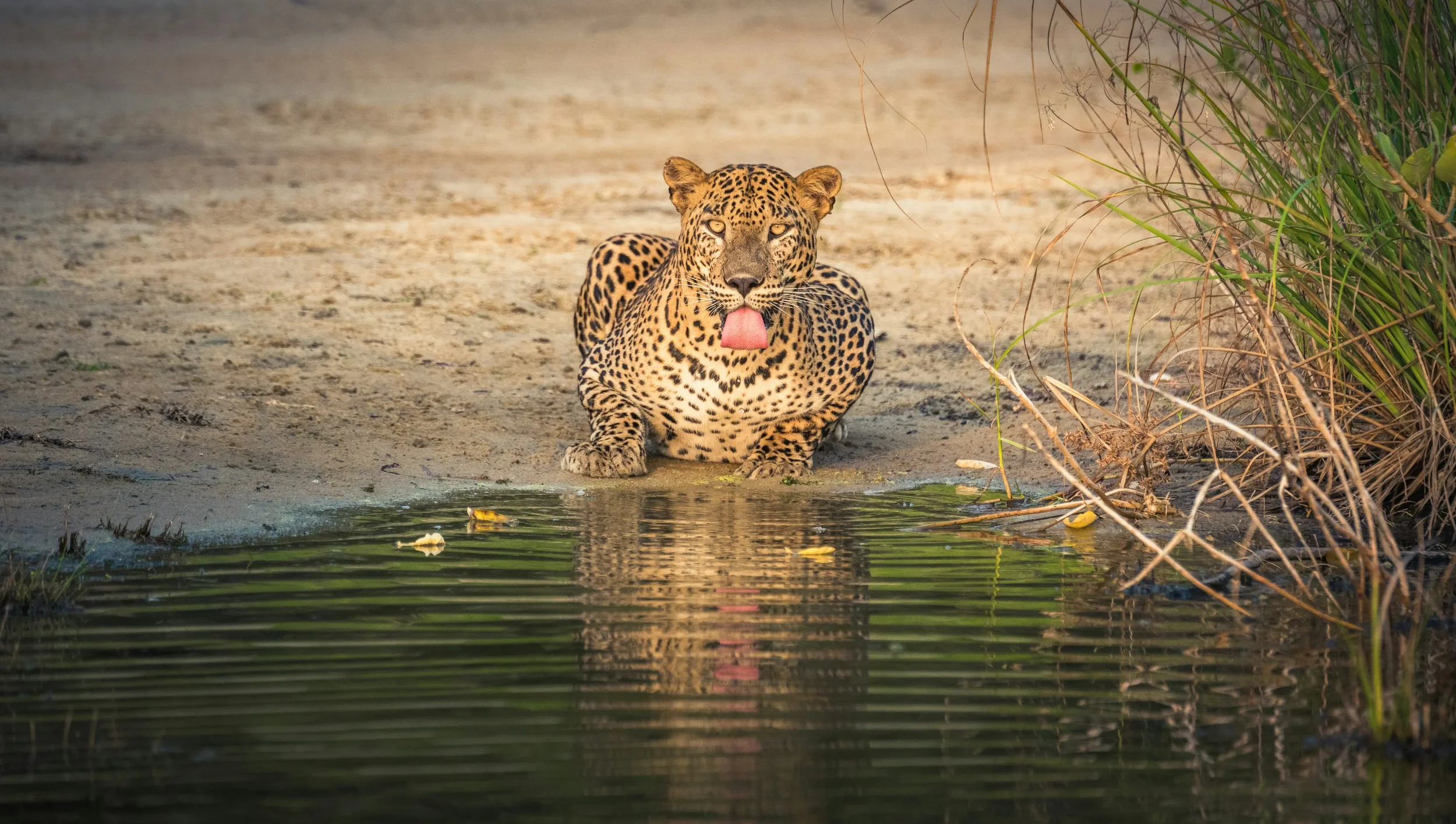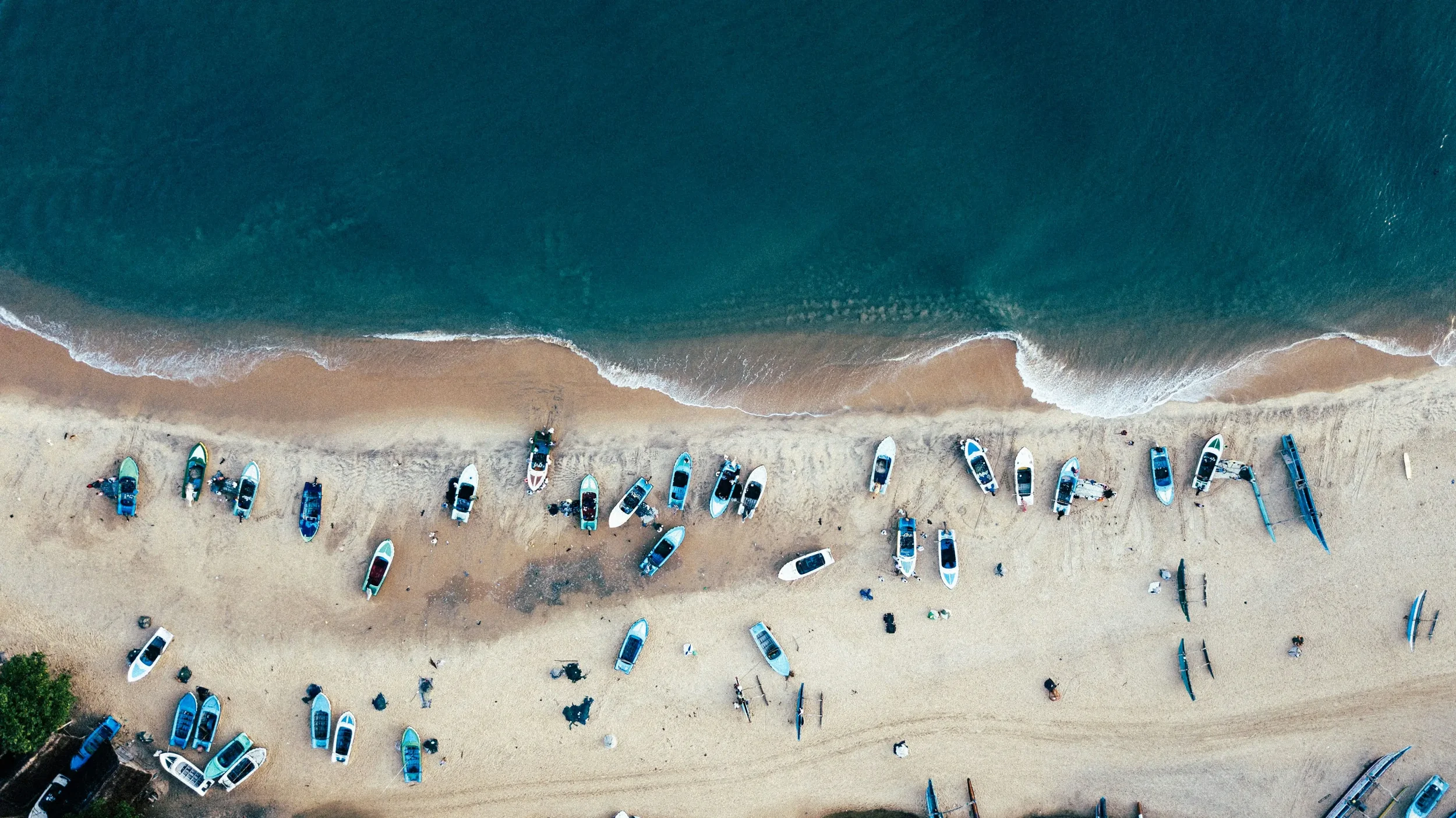SRI LANKA
-
Sri Lanka might be small, but it’s packed with variety – ancient cities, rolling tea hills, wildlife safaris and golden beaches, all within a few hours of each other. Most travellers start their journey in Colombo or nearby Negombo before heading inland to the Cultural Triangle, a region filled with ancient ruins, towering rock fortresses, and sacred temples such as Sigiriya, Dambulla, Anuradhapura and Polonnaruwa.
From there, the Hill Country brings a change of pace – cooler air, scenic train rides, and endless tea plantations around places like Kandy, Ella and Nuwara Eliya. Along the coast, you’ll find beach towns like Mirissa, Unawatuna and Arugam Bay, where you can surf, spot whales, or spend long afternoons by the water.
It’s a country that’s easy to travel around, with friendly locals, flavour-packed food and a mix of history, nature and beach life that suits many different kinds of trips. It’s also budget-friendly, well-connected by train and bus, and has plenty of simple guesthouses and hostels dotted along the main backpacker route.
-
Sri Lanka's weather is famously complex for its size, as it is affected by two separate monsoon systems. This means that there's usually good weather somewhere on the island at any given time of the year. Temperatures are generally warm and humid in coastal and lowland areas, dropping to more temperate levels in the Hill Country.
South and West Coasts (Colombo, Galle, Mirissa, Hikkaduwa) & Hill Country (Kandy, Ella, Nuwara Eliya):
Dry Season (December - March): This is the best time to visit these regions. Expect plenty of sunshine, low humidity, and calm seas, perfect for beaches and whale watching (Dec-April). The Hill Country is pleasantly cool. This is the peak tourist season.
"Yala" Monsoon (May - September): Brings rain to these areas, particularly heavy in May and June. Showers are often heavy but short, typically in the afternoon, leaving mornings sunny. While it's low season with fewer crowds and lower prices, beach activities can be limited. The Hill Country is lush but can be misty.
East and North Coasts (Trincomalee, Arugam Bay, Jaffna):
Dry Season (May - September): This is the best time to visit these regions. Expect hot, sunny, and dry weather, ideal for beaches and surfing (Arugam Bay is popular for surf in this period).
"Maha" Monsoon (October - January): Brings rain to these areas, typically from November to December.
Inter-Monsoonal Periods (October - November & April): These are transitional periods when weather can be unpredictable across the island, with a chance of heavy showers and thunderstorms anywhere. However, they also offer fewer crowds.
Important Tip: Due to the dual monsoon system, you can often find good weather by simply choosing the right coast for the time of year. For a full island tour, December to March is generally the most reliable time to enjoy the majority of the country's highlights.
-
UK, EU & US passport holders: All foreign nationals require a visa to enter Sri Lanka. The most common and convenient option is the Electronic Travel Authorization (ETA).
Electronic Travel Authorization (ETA): This is the most common and recommended way to obtain a short-stay visa for tourism or business. You must apply for an ETA online before your arrival.
Application: Apply via the official Sri Lankan ETA website (eta.gov.lk). Beware of unofficial sites that charge excessive fees.
Requirements for ETA:
Passport valid for at least 6 months from the date of arrival.
Return or onward ticket (may be requested upon arrival, though not always for the application).
Sufficient funds to cover your expenses during your stay.
ETA fee (typically US$50 for a tourist visa as of late 2024; prices can change, always check the official site).
Validity: A standard tourist ETA is typically valid for 30 days from the date of arrival, with double entry facility.
Processing Time: Usually approved within minutes or hours, but it's recommended to apply at least a few days before departure. You'll receive an approval notice via email.
Visa on Arrival (VOA): While possible at the airport, it's generally not recommended as it can involve longer queues and potentially higher fees. Obtaining the ETA online in advance streamlines your entry.
Extension: The 30-day ETA visa can usually be extended for up to 90 days from the date of arrival at the Department of Immigration and Emigration in Colombo. A second extension up to a total of 180 days (from the original date of arrival) may be granted under certain conditions. Fees apply for extensions.
Other Important Notes:
Passport Validity: Your passport must be valid for at least 6 months from your intended date of entry.
Onward Travel: You may be asked for proof of onward or return travel (e.g., a flight ticket out of Sri Lanka) upon arrival.
Yellow Fever Vaccination: A valid yellow fever vaccination certificate is required if you are coming from or have transited through a country with a risk of yellow fever transmission.
Overstay Fines: Overstaying your visa is a serious offense and will incur fines (e.g., LKR 500 per day) and potential legal consequences, including detention or deportation.
-
Currency: Sri Lankan Rupee (LKR / Rs)
Cash is widely used, especially for local transport, street food, small shops, and guesthouses outside of major tourist hubs. Credit/debit cards are accepted at larger hotels, supermarkets, and more upscale restaurants in cities and popular tourist areas.
Best way to access money:
ATMs: Widely available in cities and towns.
Fees: Sri Lankan ATMs typically charge a per-transaction fee (around LKR 200-500, which is approx. US$0.65-1.65).
Withdrawal Limits: Limits vary by bank, but are often around LKR 25,000 - 100,000 (approx. US$80-320) per transaction. You may need to make multiple withdrawals.
Use a fee-free travel card (such as Revolut, Wise, or Monzo) to minimize your home bank's foreign transaction fees and ATM charges.
Money Exchange: You can exchange major currencies (USD, EUR, GBP) at airports, banks, and licensed money changers. Airport rates are often less favorable than those in major cities.
Bring USD/Cash: It's useful to carry a small amount of US Dollars (clean, newer bills) for immediate expenses like the ETA fee (if paying on arrival) or in emergencies.
Typical daily backpacker budget: LKR 6,000 – 10,000/day (approx. US$20 – US$35 USD) – This budget should comfortably cover hostel dorms or budget guesthouses, delicious local meals (rice & curry!), public bus/train transport, and entry to some attractions. You can certainly travel for less by sticking to local food and basic accommodation.
Tips:
Public Transport: Trains and buses are incredibly cheap and offer a truly local experience. The Kandy to Ella train ride is world-famous for its scenic beauty – book in advance if possible. Use the PickMe app in major cities for transparent tuk-tuk and taxi fares.
Rice & Curry: The staple meal, "rice and curry," is delicious, affordable, and often comes with multiple vegetable dishes. Look for local "rice & curry" eateries for the best value.
Temple Etiquette: When visiting temples, dress modestly (shoulders and knees covered) and remove your shoes.
Water Safety: Only drink bottled water. Carry a reusable bottle and refill it at guesthouses or places offering filtered water to reduce plastic waste.
Bargain Politely: Bargaining is common in markets and for tuk-tuk rides (if not using an app). Always do so with a smile.
Sim Card: Purchase a local SIM card (e.g., Dialog, Mobitel) on arrival at the airport for easy and affordable connectivity.
Safety: Be aware of common scams (e.g., gem scams, unsolicited guides). Always be polite but firm if approached by touts.
Main Destinations

